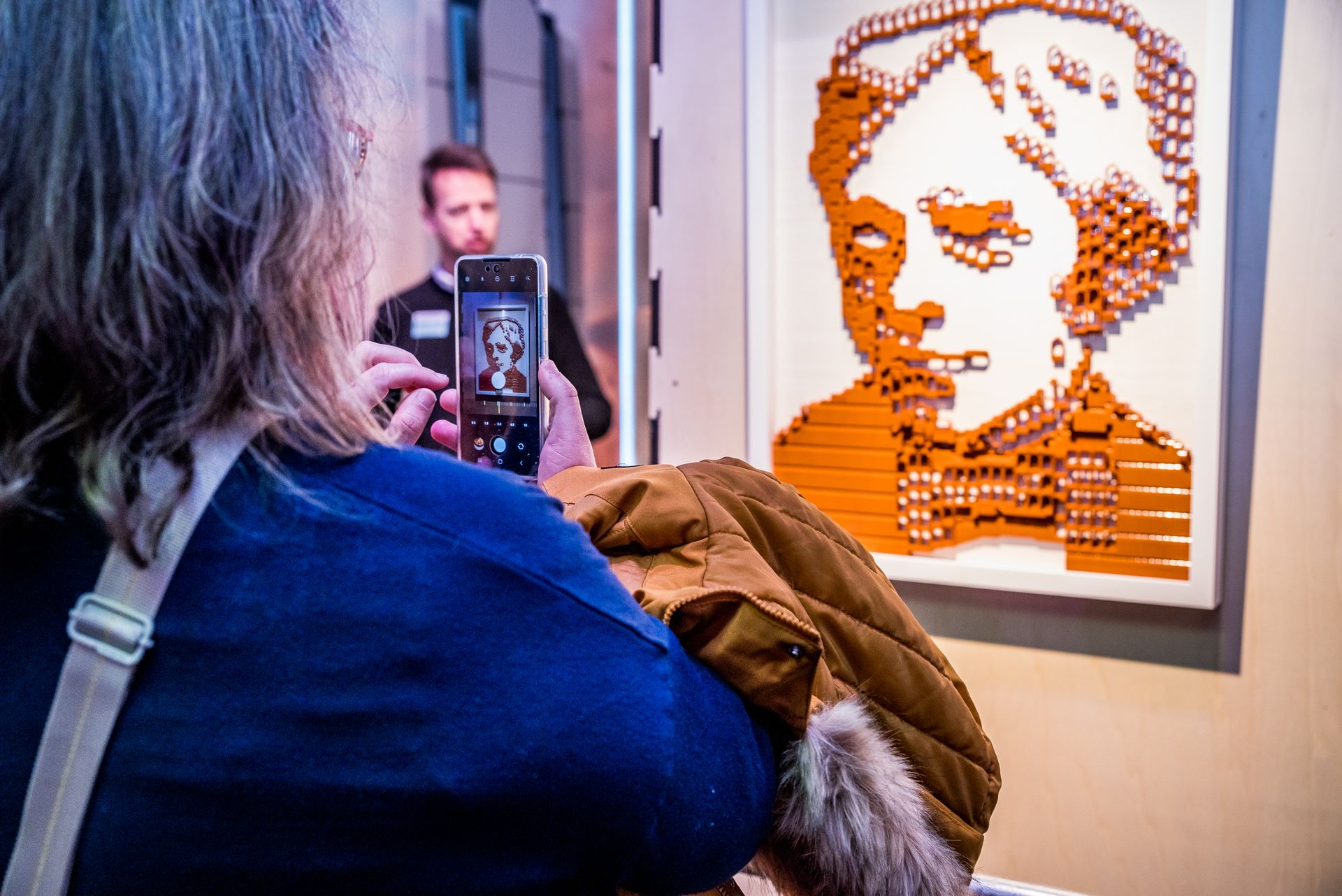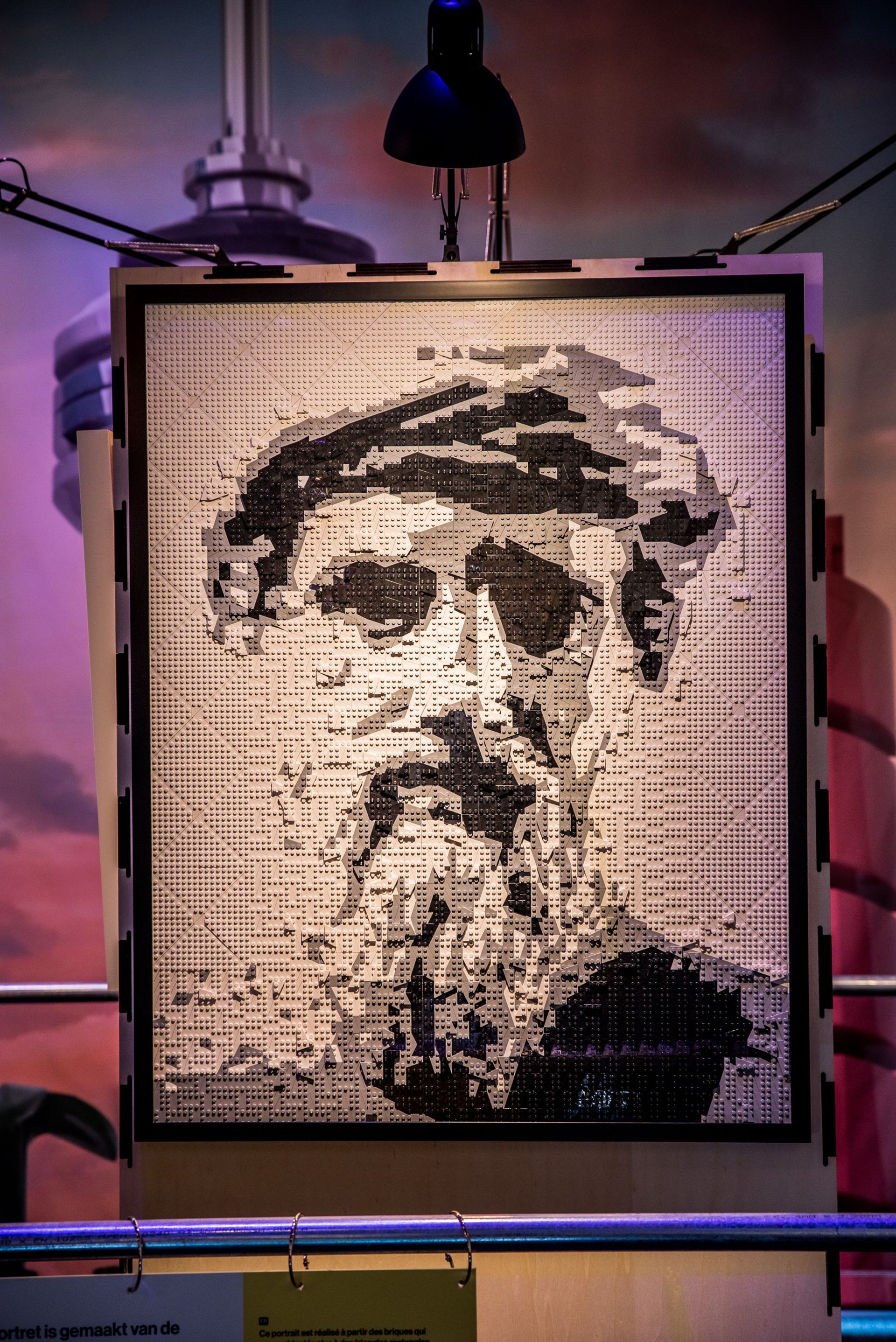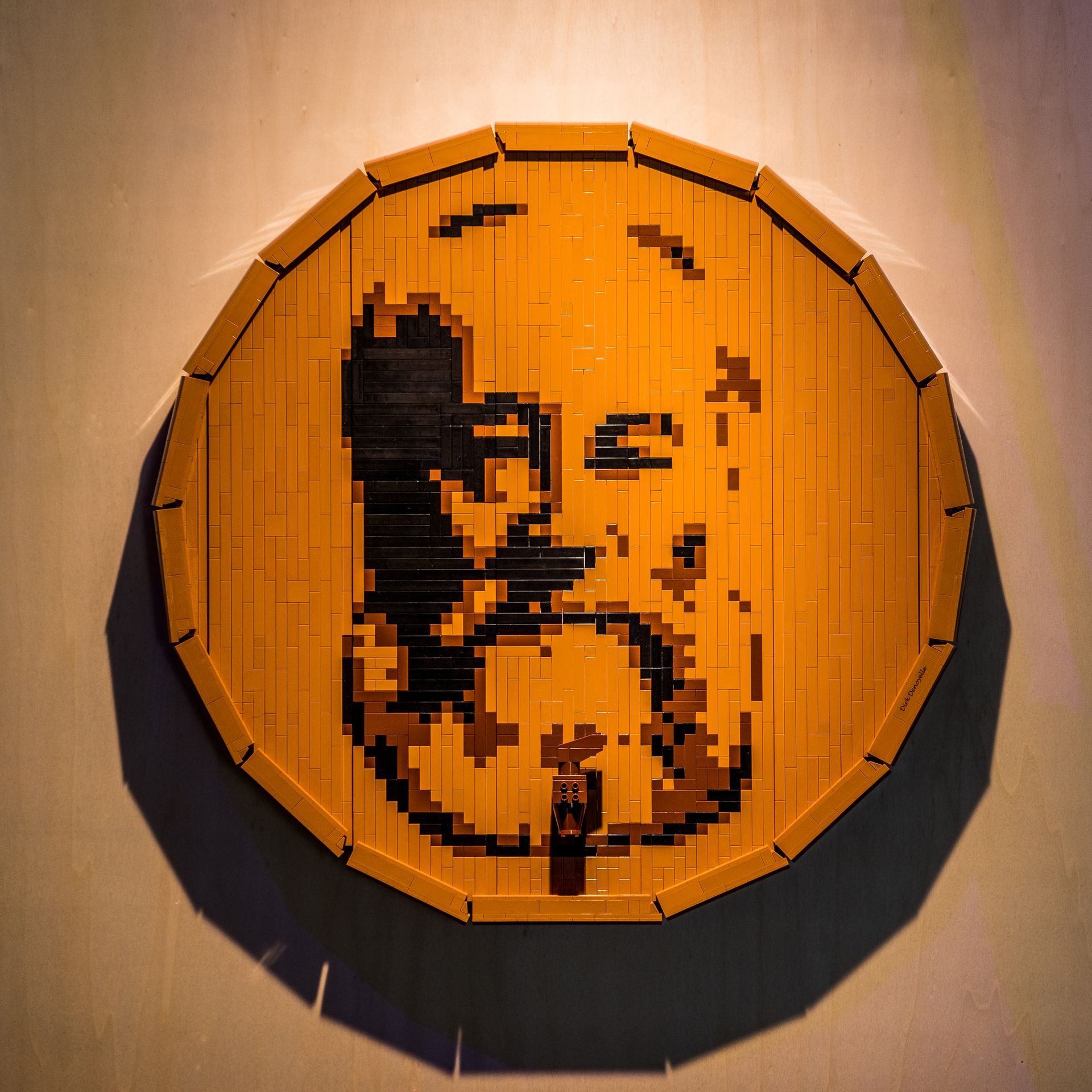Amazings worked together with the Flemish Experience Centre for Science and Technology, Technopolis, for the exhibition Science & Stones. This two part series and exhibition sheds a light on the magnificent scientists who helped shape the world as we know it today.
Pythagoras (c. 570 - c. 500 BC)
This Greek philosopher is best known for the Pythagorean theorem, which states that "in a right-angled triangle the square of the hypotenuse is equal [to the sum of] the squares of the other two sides" - meaning: a² + b² = c². So naturally we built his portrait out of LEGO® bricks that most resemble right-angled triangles.
Marie Skłodowska-Curie (1867 - 1934)
Marie Curie was a physicist and chemist who conducted pioneering research on radioactivity. She and her husband gave their name to the first (now outdated) unit of radioactivity. Did you know that Curie was not only the first woman to win a Nobel Prize but also the first person and the only woman to win the Nobel Prize twice, and the only person to ever win the Nobel Prize in two scientific fields? Pretty incredible if you ask us, which is why we honored her with a portrait!
Sir Isaac Newton (1643 - 1727)
Newton was one of the greatest mathematicians and physicists of all time and a very influential scientist. He gave his name to the unit of power. Legend has it he was inspired to formulate his theory of gravitation after an apple fell on his head, although that's not entirely true. Scholars believe that while he was inspired by an apple falling from a tree, it unfortunately did not land on his head. That tree, by the way, was blown over in the springs storms of 2022...
James Prescott Joule (1818 - 1889)
Joule studied the nature of heat, his work led to the law of conservation of energy and later also to the development of the first law of thermodynamics. The unit of energy, joule, is named after him. Fun fact: his father was a brewer, that's why we placed him in a barrel. Cheers!
Michael Faraday (1791 - 1861)
An English scientist whose main discoveries include the principles underlying electromagnetic induction, diamagnetism and electrolysis. He is most famous for the "Faraday Cage", the shielding effect that occurs in static electric fields. The charge of static electricity resides only on the exterior of a charged conductor, and the exterior charge has no influence on anything enclosed within a conductor. He also gave his name to the unit of electrical charge.
Want to discover these works yourself?
You can! Science & Stones runs until the end of June at Technopolis.
Practical Information about Science & Stones
🗓 When: From the 2nd of April until the end of July 2022
📍 Where: Technopolis: Technologielaan 1, 2800 Mechelen
✉️ Tickets available here or at the ticket booths
💶 Price: Included in the standard Technopolis ticket
Good to know
All artworks of our exhibit Science & Stones, that you currently can admire at Technopolis Mechelen, will be accessible in the Royal Palace of Brussels from the 21st of July until the 31st of August (apart from the workshop "De Stad van de Toekomst").



